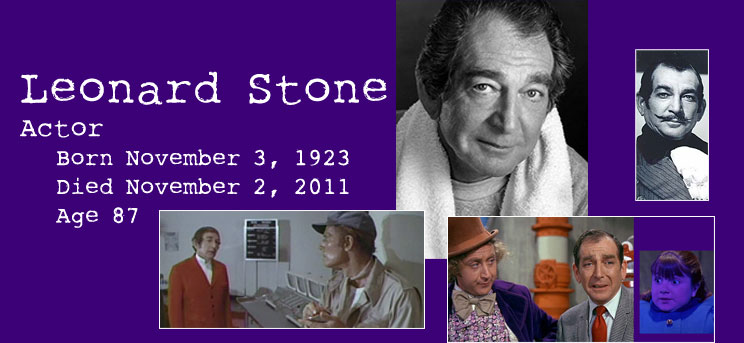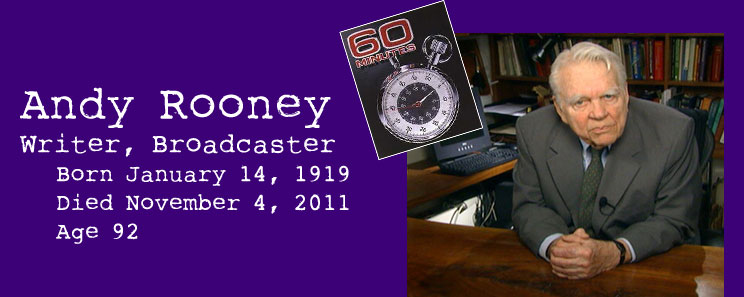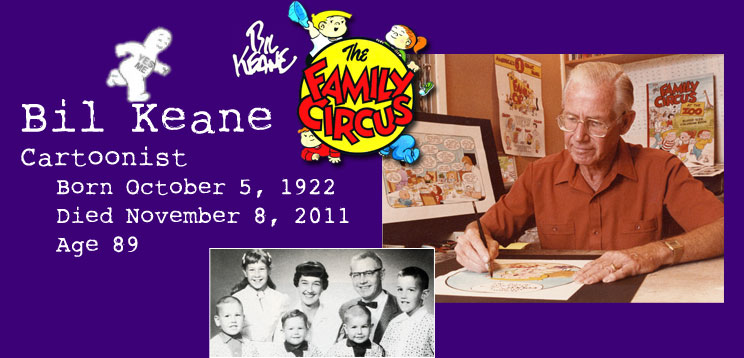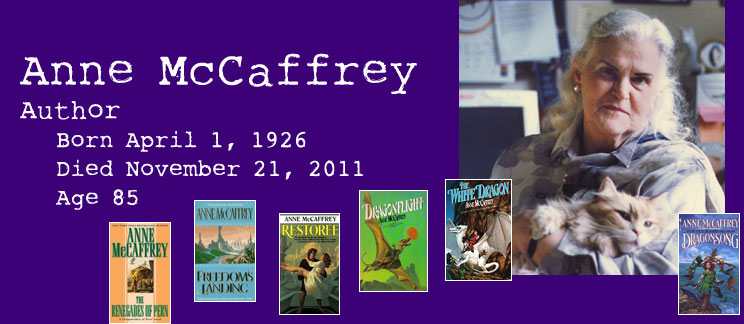
 |
||||||||||||||
 |
||||||||||||||
A lovely tribute to Uncle Charley from Brad, and a playlet from MattH. Enjoy. * * * Sid Melton was a character actor who worked all the time, and he was in every movie and TV show ever made, from 1941 on. It is astonishing how someone who looked so distinctive managed to blend in everywhere, with everybody, like a bug-eyed and flap-eared chameleon. Boomers in their 60s may remember Sid as Captain Midnight's mechanic, Ichabod "Ikky" Mudd. That's Mudd — with two Ds, he'd insist. Captain Midnight was one of those huge radio successes that became a meager TV failure, but that didn't stop Sid. He was everywhere. He'd do prime-time comedies such as Our Miss Brooks and classic kidvid like Adventures of Superman, where he lent his talents to the series' most incomprehensible episode, "The Deadly Rock." Sid would show up once during a series, make his mark, and move on. Then Danny Thomas cast him in a soft reboot of his eponymous (and enormously popular) sitcom in 1959, and it was the steadiest work Sid had ever had. He played Charley Harper, Danny's agent and "uncle" to his kids. Comedian Pat Carroll played Charley's wife, Bunny. Their chemistry was perfect. Sid would channel his Yiddish-theater father, and Pat would keep up with Sid's histrionics without breaking a sweat. Sid's other ongoing success came a little later with Green Acres, in which he played Alf Monroe, who with his brother (heh) Ralph were the only carpenters in Hooterville. Sid did three seasons of the show before leaving in 1970 to rejoin Danny Thomas in his briefly-lived sequel series, Make Room for Granddaddy. After that, Sid kept on working steadily until the century ended. And now he's dead. With two Ds. As Amelia said, make room for player Beth & Teresa, who scores a total of seven points for this hit — two for age and five for the solo. — Brad * * * And now, make room for this — a perfect coda for the long and brilliant career of Sid Melton, from Matthew Hubbard: |
||||||||||||||
|
||||||||||||||
 |
||||||||||||||
No one wanted to do Leonard Stone. Until Kris Baker said, "I know nothing about him. I'm perfect for the job." And that she was. Thanks, K-M. * * * Poor Leonard Stone. His film acting credits are few, but certainly he deserves better than being cited as "Violet's father in Willy Wonka and the Chocolate Factory." What Leonard Stone really was, was one of those "it's that guy!" actors, who guest-starred innumerable times in television series. In Stone's case, "innumerable" means that he appeared in 103 different TV series and often in multiple appearances. He portrayed Judge Paul Hanson in ten episodes of L.A. Law filmed over a seven-year period. He also appeared on four episodes of Quincy, M.E. — but, each time, he portrayed a different character. In 1977, he appeared in an episode of Alice as "Arnie," and was back in 1984 for three more episodes, but as "Lenny." Stone was five different people on Barney Miller and four on Mannix. When scripted television, both dramatic and comedic, demanded an actor step into a one-shot role, the Leonard Stones of the acting world were called upon. It wasn't hard to suspend our disbelief when we saw "Artie Brunson" morph into "Uncle Jack" within a year on Simon & Simon" Even the silliest of series carried more weight then than today's so-called reality series. Leonard Stone was born in Salem, Oregon on November 3rd, 1923 and died in Encinitas, California 87 years and 364 days later, on November 2nd, 2011. He is survived by his wife Carole and four children. Oh, how we wish Kim Kardashian would morph into "Uncle Jack" within a year. Garrett, the king of character actors, gets the solo. 5 for the hit, 5 for the solo. Total: 10. — Kris Baker |
||||||||||||||
 |
||||||||||||||
I asked Brad to do this, figuring since he worked at CBS, he'd have the scoop. Oh man, was I right. Lovely. Thanks, Brad, I never watched him either. * * * Hughes Rudd, the great CBS News correspondent and a natural-born curmudgeon, once observed that "you can fool all of the people some of the time, and some of the people all of the time — and that should be sufficient." And, thus, we have the professional success of Andy Rooney, who offered a weekly dose of deep criticism about often shallow things. I was one of the minority in the 60 Minutes audience who'd routinely fast-forward through Rooney's endpieces. Usually I'd see his desk was full of groceries or Happy Meal toys or whatever else he was groused about that week as I whizzed by, and I really didn't care. I guess I missed some good stuff, since you can't do more than thirty years of commentary-ing and not accidentally poop out a good one every so often. I worked at CBS News, in network radio, a long time ago. I saw Andy Rooney just once. We were crashing around on something, and in the middle of everything Rooney and some friend of his came drifting through our little bit of heaven, Rooney completely ignoring us as he informed his friend, "They're going to tear all of this out soon and build us some offices." It was the first we'd heard of it. As Rooney and his pal breezed their way on out, I stood up and said in my Andy Rooney voice, "Don't you just hate it when somebody wanders right past where you're working and takes a warm, gooey shit over everything you're trying to do?" I suppose it's to his credit that Rooney ignored me. I also remember sitting in a recording studio and watching 60 Minutes — I had to, at work — and up came Rooney, talking about how he hated computers and refused to use them, and that he owned three faithful old typewriters, one of which was sitting on his desk as he spoke. "That's a bunch of bullshit," the studio technician said. "I just gave him the copy of Word he asked me for." Andy Rooney's was one of the longest-running acts there was, and he did very well with it. He worked pretty much up until he died. Every real news guy wants to croak at his desk, with his nose wedged between the keys of his faithful old typewriter, and Andy Rooney damn near managed it. Good for him, I say. And so say Born with the Defect, Carl&Cherie, Dead Batteries, JTH, Mark, Pat Peeve, The Wiz and Tim J, who each get a whopping two points. — Brad |
||||||||||||||
 |
||||||||||||||
Wendy Green did an amazing job of writing up the life of Bil Keane. I can't think of anyone who would have done a better job. She also got the hit, along with Jenstrikesagain. They get 8 points each — 5 for age, 3 for duet. * * * Bil Keane was the creator of "The Family Circus," drawn inside a circle to show the sense of closeness between Mommy and Daddy and their children Billy, Dolly, Jeffy and PJ. That factoid alone shows how wholesome this comic is: never a side-splitting laugh or even a snide wisecrack, only simple line drawings paired with the actual mutterings of Keane's five children, nine grandchildren, and one great-grandchild. The strip spawned three animated specials, 14 million paperback compilations, and various Family Circus calendars, mugs, greeting cards, and other non-recyclable items. Keane was born October 5, 1922 in Philadelphia, PA. He taught himself to draw by copying the cartoonists of the New Yorker magazine. His work was self-published in a satire magazine, The Saturday Evening Toast, that he and friends at Northeast Catholic High School produced. He dropped the last "L" in his name while signing his early cartoons because he thought "Bil" looked more distinguished. Dozens of obituaries report Keane's life facts: how he drew for Yank Magazine and Pacific Stars and Stripes while serving in the Army (1942-1945) and how he met his wife, Thelma, during the war. The success of his first syndicated strip, Channel Chuckles, launched while he was a staff cartoonist for the Philadelphia Bulletin, proved he could support himself and his family. Keane left newspaper work and moved his family to Arizona, where he began The Family Circus (titled the Family Circle until the magazine complained) with the first panel published in February 1960. If you want to enjoy its hilarity, click here. Keane's family joined him in the strip's production. Son Jeff assisted Keane with the drawing and lettering, gradually assuming control so effortlessly that no one realized his father had retired an unknown number of years ago. (Doubt this? Try finding a retirement date for the man; I scanned ten Google pages of "Bil Keane retire" and got nothing.) Wife Thelma served as his business and financial manager; she died of Alzheimer's in 2008. (I didn't find a retirement date for her, either.) Daughter Gail now oversees merchandising and finances. Glen Keane escaped the Circle to become a Disney animator who created the characters Ariel, The Beast, Tarzan, Pocahantas and Rapunzel. Sons Chris and Neal followed dotted lines away from the Keane house and were never seen again. Keane had no objection to his strip and its characters appearing in TV skits, parodies, or other cartoon strips as long as the use complimented his image of a warm, loving family. Bill Griffith, creator of Zippy the Pinhead and a fan of Keane's, had Zippy suffer a bump to his head that made him believe he was Jeffy, and Keane featured Zippy in several of his panels. This cartoonist goodwill did not extend to the "Dysfunctional Family Circus," a collaborative web comic begun in 1992, although it wasn't until 1999 that fan complaints about the raunchiness of the parodies convinced Keane to ask King Features, his syndicator, to send a cease-and-desist letter to Greg Galcik, who had created the most popular version of the DFC. Galcik posted the letter on his site. That post prompted Keane to call Galcik; the two-hour conversation established that the two men had attended the same high school (fifty years apart) and led to Galcik taking his site down after its 500th post in November 1999. Galcik's action did not end the on-line Family Circus parodies. There is the Nietzsche Family Circus, which pairs Keane's panels with random Nietzsche quotes; the Jersey Circus, a mashup of Family Circus and Jersey Shore; Lovecraftian versions such as The Nameless Dread and The Family Sarnath; The Sheen Family Circus (Charlie, of course); and The Other Family, which definitely would have gotten a C&D letter had Keane ever heard of it. So, Bil Keane is gone and the Family Circus rolls on, bringing us yet more circles filled with "the sort of wholesomeness that simply infuriates anyone who has had a normal rather than an fantasy family life" (http://www.zompist.com/) or, in Keane's words, "consistency and simplicity." Charles M. Schulz thought it was funny. Who am I to argue with a dead man? — Wendy |
||||||||||||||
 |
||||||||||||||
Once again I've been asked to update the death of a Munchkin. I suppose it's because I'm considered sensitive to the feelings of the Little People. And it is true, I am concerned with how society perceives these little runts. Let us briefly revisit the dwarf's exciting Munchkin life. This particular little fucker was born in Prakfalva, Hungary ... once known as The Kingdom of Hungary ... for the pedantic dwarf lovers among you ... His parents were actually giants. No, seriously. Fucking giants. His father was 6' 6" and his mother was 6' 4", so you can imagine how popular he was in the Kosiczky household [1]. So popular in fact, that his loving mom and dad, after talking some quack into stretching little Karl on The Rack, when that didn't work, sold him into midget slavery when he was nine years old. (Really!) Somehow he ended up here, in the Land of Dwarf Opportunity, where in 1939 he and twelve or thirteen thousand other pygmies sang and danced their way through The Wizard of Oz. And, in an effort to showcase his talent, the misshapen little bastard had four different roles in The Wizard of Oz. Yes, that's right, count 'em, four different roles. He played a Munchkin, a Munchkin, a Munchkin, and he also played a fucking Munchkin. After that blockbuster, it was on to major stardom as a stock performer in The Royal American Carnival in Tampa, Florida. Then, like every other fucking Munchkin, he toured American grocery store openings ... for the next sixty years. Apparently good, honest, American hard work was too much for the diminutive Slover, as he bypassed the Dwarf Tossing craze. And, finally, I would be remiss if I didn't address his mug. Forget that he had a complexion like the bottom of an Asics Cross Trainer, or that his ears were larger than all of Slovakia [2]. I mean, ears that big have only one use ... and it has nothing to do with Munchkinism. No, no. Check out his hair. He dyed his hair. Just how fucking vain can a 93-year-old dwarf be to dye his hair? Did he think he was going to get lucky? C'mon, girls, I wanna see a show of hands ... Who's looking forward to bebopping a 93-year-old midget ... with or without the dye job? Constant Irritant, who for the last few years has waged her own war on dwarfs, gets two points for the hit and an additional five for the solo. Total: 7. — Bill Schenley [1] His name at birth. |
||||||||||||||
 |
||||||||||||||
Another volunteer, this time the lovely Brigid. This is great. * * * How do you become the first woman to win both the Hugo and the Nebula awards in the same year? If you're Anne McCaffrey, you do it by building a vividly detailed world threatened with dire natural forces, defended by fantastical creatures and near-mythic heroes. Make those heroes scrappy Cinderellas who plot to escape their victimization by their own agency, and you've won over a significant but underserved portion of fandom: the ostracized, nerdy girls. In an age in which science fiction was dominated by male writers writing male protagonists for a largely male audience, Ms. McCaffrey wrote action-adventure novels that revolved around strong female characters. She wrote about women with guts and real skills who engineered their own escapes rather than waiting for their savior Prince Charming. I don't know anyone who credits Podkayne of Mars for helping them get through middle school. That distinction belongs to Lessa, Menolly, and Killashandra Ree. To say that McCaffrey was a great early voice for grrl power doesn't mean that she was a great feminist writer. Far from it. The sexual politics of Pern specifically have always made some readers uncomfortable. For instance, Freudians were having a field day with her rape-fantasy mating flights long before she ever shared her views on tent pegs. On Pern the men are men, the women are heterosexual and the green riders are ... well ... I guess you could politely say "neither." That is, until token-girl Mirrim is allowed to impress a green dragon — because nothing works to negate those gender stereotypes like a little tokenism, am I right? In spite of McCaffrey's shortcomings, the fans love her. She was by most accounts a very gracious and appreciative lady. In the days after her demise, many stories were shared online from fans who'd met her at a con or a book signing, or exchanged emails and letters. She always gave the impression that she valued her readers ... well, unless they were writing slash fic, but that's a whole other story. — Brigid
|
||||||||||||||
